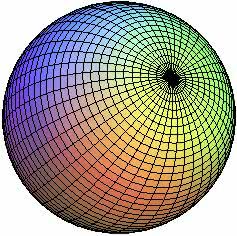Sine, Cosine and Tangent they are reasons that relate the side measures with the measures of angles on one right triangle. These reasons are known as trigonometric relations. To define them, it is important to know some elements of the trianglerectangle, which will be discussed below:
Rectangle Triangle Elements
One trianglerectangle it is a polygon three-sided that has an internal angle straight. It is impossible for a triangle to have two or more angles equal to or greater than 90°.

Triangle with an angle measuring 90°
the sides of a trianglerectangle are given special names according to their position. The side opposite the right angle is called the hypotenuse. The other two sides are called peccaries.
To the reasonstrigonometric, it is important to note that a collared Can be opposite or adjacent depending on the angle being analyzed. For example, in the triangle above, side AB is the hypotenuse, and side BC is sideways opposite angle α and sideways adjacent to angle β. The side AC, on the other hand, is adjacent to angle α and sideways opposite angle β.
Sine Ratio
in given trianglerectangle ABC, we say that the sine of the angle α is equal to the measure of the opposite leg to angle α, divided by the measure of hypotenuse of the triangle. In other words:
Senα = Cathetus opposite α
hypotenuse
The following triangle, for example, has real measurements of a trianglerectangle.

Note that α = 30°, so,
Sen30 = 1
2
This measure is valid for all triangle which has an angle of 30°, so, regardless of the measurements of its sides, the collaredopposite at a 30° angle will always be half the length of the hypotenuse.
Knowing this, when a trianglerectangle having an angle of 30°, it will be possible to determine the measure of one of its sides, hypotenuse or leg opposite the angle of 30°, knowing only the measure of the other. In the following triangle, for example, we can determine the measure of x.

Note that the collaredopposite at an angle of 30° it measures 10 cm and that the hypotenuse of this triangle is unknown. Knowing that sen30° = 1/2, we can do:
sen30° = 10
x
1 = 10
2x
x = 2·10
x = 20 cm.
It is worth noting that the sine (O cosine and the tangent) of an angle only vary according to the variation of the angle, that is, regardless of the length of the sides of the triangle, whenever the observed sine is 30°, its value will be 1/2.
cosine ratio
the reason cosine is similar to reason sine, however, is defined as the division between the side adjacent to an angle and the hypotenuse of right triangle. Thus, the cosine of angle α is:
Cosα = Catheto adjacent to α
Hypotenuse
This ratio can be used for the same purposes as the sine ratio: finding the measure of the collaredopposite or from hypotenuse with the measure of one of these two sides. Therefore, it is necessary to know the cosine values of the angle in question.
tangent ratio
THE reasontangent is given by dividing the side opposite angle α by the side adjacent to angle α. In other words:
tgα = Cathetus opposite α
Catheto adjacent to α
It is worth remembering that, regardless of the dimensions of the triangle, the values of sine, cosine and tangent of an angle only change if that angle is changed.
Table of Sine, Cosine and Tangent Values of Remarkable Angles
The following table contains the values for sine, cosine and tangent of the most important angles for this content.
30° |
45° |
60° |
|
Sen |
1 |
√2 |
√3 |
waistband |
√3 |
√2 |
1 |
tg |
√3 |
1 |
√3 |
Table of Trigonometric Ratio Values for Notable Angles
This table contains the values of the sine, cosine and tangent angles 30°, 45° and 60°. It should be used to discover one side of a triangle, as shown in the following example:
Example: Determine the x value of the following triangle:

In this triangle, an angle is 30°, its opposite side measures 10 cm, and we want to find the measure of its adjacent side. THE reasontrigonometric that uses the collaredopposite it's the collaredadjacent is the tangent. Thus:
tg30° = 10
x
From the table of values given above, we find that tg 30° = √3. Substituting this value in the ratio of the tangent, we will have:
√3 = 10
x
x√3 = 10
x = 10
√3
Rationalizing the fraction, we will have:
x = 10√3
3
Related video lessons:



